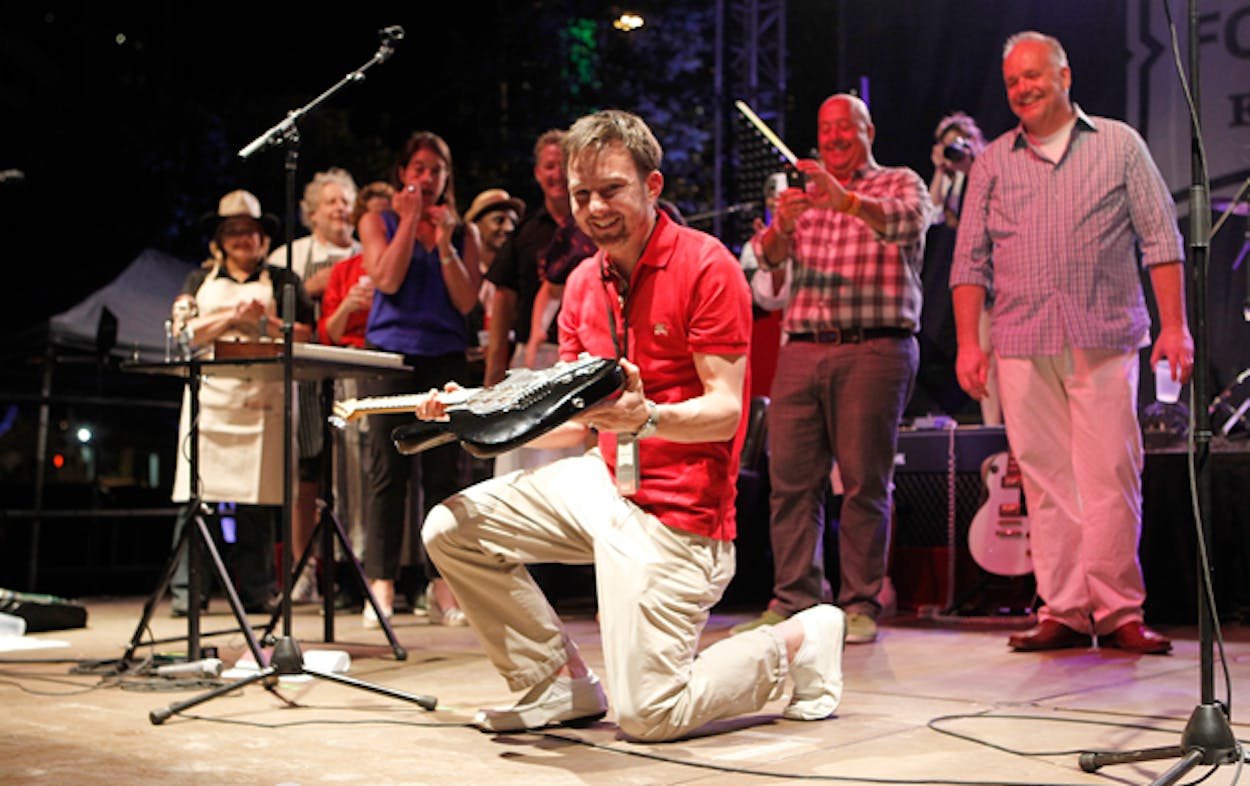For months, a great deal of hype and anticipation surrounded this weekend’s Austin Food & Wine Festival, and yet even before the festival commenced, extensive criticism began plaguing it. Many critics from around Texas and Austin bemoaned the rather pricey tickets: $850 is a pretty penny to have to pay for a VIP ticket, even if you are tasting the cuisine from figures like Masaharu Morimoto, Marcus Samuelsson, and Austin’s own Paul Qui while sipping on glasses upon glasses of bold reds and subtle whites. And, sure, you could pay $250 for a Weekender Pass, but would that $600 difference drastically change the experience? (Spoiler alert: it did.)
Many Texans were attached to the less-high-brow, less-Austin-friendly Texas Hill Country Food & Wine Festival. And no Texan likes when East-Coast outsiders come into their state and tell them how to run things, so to have a name like Food & Wine behind the whole event really sent some locals over the edge.
In the end, the festival’s star-studded chef lineup, gourmet tastings, and provoking panels provided good to great satisfaction and entertainment for the commencement year. And, the food and wine–oh God, the food and wine–was amazing. Each of the chefs brought forth their signature performances, personalities, and tastings; massive props to them for their delivery and charisma.
Yet in truth, there is improvement needed before next year.
No better kickoff could have been planned than Tim Love’s large grilling demo. With two hundred fired-up grills, juicy skirt steaks, thick New York strips, and crisp broccolini, the chef communicated his extensive grilling knowledge with a welcome helping of crude and risqué humor. The chef was like a culinary tour guide leading clueless, curious diners through flaming coals.
Morimoto’s demo was laced in his notable charm, culinary smarts, and calm nature. Although there was significant timing overlap in the demos, if you were able to inch your way into the cooking tents, you probably had a darn good time Saturday and Sunday.
Saturday’s awkward two-hour gap between events was the most noticeable flaw of the weekend. Attendees simply slept on concrete bricks to sleep off food comas, sheltered themselves from the sun under under bare tree limbs, stalked celebrity chefs around the park, or stared into the dusty abyss. Word of advice for next year: never give your attendees an excuse to leave your festival – ever. If you absolutely have to make them wait, you need to make it more comfortable. The lack of tents, fans, and seating made it difficult to want to stay and sweat it out.
It was also a little saddening to see the condition of Auditorium Shores. Mother Nature did a number on the land over the past year, so much so that when a light breeze blew, a stormy dust bowl was created. You can’t blame C3 and the festival for that, though; Texas weather is unforgiving.
Saturday night’s Rock Your Taco Showdown was clearly planned well, but executed a little haphazardly. Sure, the idea of tasting some of the nation’s best chef’s tacos is tempting, but is it really worth it to stand in long line for 20 to 25 minutes for each small tasting? No…. If you’re going to pay $850, you better not have to wait. And yes, not even for Tyson Cole’s award-winning crispy pork jowl taco. I’m that serious.
Last but not least, the mosh pits of people tying to get to book signings, cooking demos, food tastings, community bathrooms, and the one and only entrance was a little absurd. This all goes back to the issue of comfort; if you’re going to make your guests dish out the big bucks, you better deliver.
I believe in the potential of this festival. Austin is a city that is growing in national culinary relevance, and with more tweaking and better planning, I believe this festival can be on par with the Food & Wine Classic in Aspen. The Austin Food & Wine Festival’s libations and eatings were glorious, but if they are going to make the festival worth the ticket prices next year, they better bring all the charms, bells, and whistles and nothing less.
- More About:
- Tyson Cole
- Tim Love
- Paul Qui






